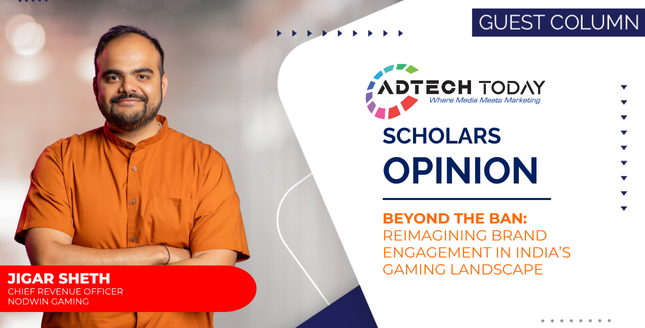
The Promotion and Regulation of Online Gaming law, 2025 marks a watershed moment for India’s gaming and advertising ecosystem. For the first time, we have a clear legal distinction between esports, online money games, and other forms of digital entertainment. This clarity is an economic and cultural opportunity that could redefine India’s place in the global gaming economy.
By banning all real-money gaming (RMG) and its promotion, the Law has erased nearly ₹4,000–5,000 crore in annual ad spends, according to PwC’s 2024 report. This has disrupted business models across sports leagues, broadcasters, agencies, and influencers. The Indian Premier League (IPL), which leaned heavily on RMG sponsorships, faces a major reset.
But disruption is often the breeding ground for reinvention. Just as the decline of crypto and edtech advertising gave rise to new categories, the vacuum left by RMG will not remain empty. Instead, it is forcing brands, publishers, and investors to engage with India’s gaming ecosystem on more sustainable, future-proof terms.
For years, esports and casual video games were unfairly conflated with online betting and money games, creating hesitation among investors, brands, and even parents. By officially recognizing esports as a legitimate competitive sport, and social gaming as skill-based games focused on entertainment, social interaction, or education without financial stakes, the path forward is clear. These categories will be encouraged, supported, and can be formally registered and promoted by the government.
This clarity builds trust across the value chain:
Globally, integrations like Nike skins in Fortnite or Monster Energy in Death Stranding show how brands can embed seamlessly into gaming culture. In India, BGMI’s tie-ups with Bollywood stars and cricket icons hint at the scale of possibilities.
With real money games sidelined, brands are increasingly turning to esports, gamification, and creator-driven experiences to connect with India’s digital-first youth. Esports has emerged as a major growth engine, with the market expected to expand at a 25–30% CAGR over the next five years (KPMG . National leagues, influencer-led tournaments, and fan-centric activations allow brands to embed themselves in gaming culture in meaningful ways. For instance, NODWIN Gaming’s BGMS tournament series provides brands like OnePlus, Tesla and Bisleri with opportunities to engage directly with esports audiences, creating campaigns rooted in skill, competition, fandom and community rather than chance.
Gamification and engagement technology also offer dynamic avenues for brand storytelling. From loyalty programs to AR-driven experiences and AI-powered personalization, gamified campaigns have become a standard for FMCG, tech, and lifestyle brands targeting Gen Z. An example of this is Mentos’ Fizzooka in Fortnite, which allowed over a million daily players to interact with the brand through a playful in-game activation inspired by its viral mentos-coke experiments.
Finally, gaming influencers, cosplayers, and digital content creators provide authentic connections that traditional advertising cannot replicate. In India, events like Comic Con India and NODWIN’s DreamHack tournaments leverage cosplayers, meet-and-greets, and influencer-driven activations to bring fans closer to brands, creating organic visibility and long-lasting community engagement.
While the Law provides much-needed clarity for the gaming ecosystem, successful execution will be key, and several hurdles remain. Streamlined processes for large esports events, visa facilitation for athletes, and professionalized talent pipelines through research and training centres will be critical to sustaining growth. Awareness programs targeting authorities, financial institutions, and the general public are also necessary to eliminate lingering confusion between esports and banned gaming categories.
Equally important is the composition of the regulatory authority, it must be independent, representative of the wider gaming ecosystem, and free from conflicts of interest to ensure policies are practical and effective. These represent just some of the issues at hand; many unknowns remain that will need to be addressed as the industry evolves and the regulatory framework is implemented in practice.
The Online Gaming Law 2025 does not magically solve every challenge. What it does is remove doubt. And in business, clarity is the bedrock of growth.
For brands, it opens a trusted, culturally resonant channel to India’s digital-first audience. For investors, it signals a stable environment to place long-term bets. For publishers, it unlocks confidence to commit resources.
If executed with vision and collaboration, this moment could well be the inflection point that transforms India from a high-potential esports market into a global gaming powerhouse—not in some distant future, but within this decade.